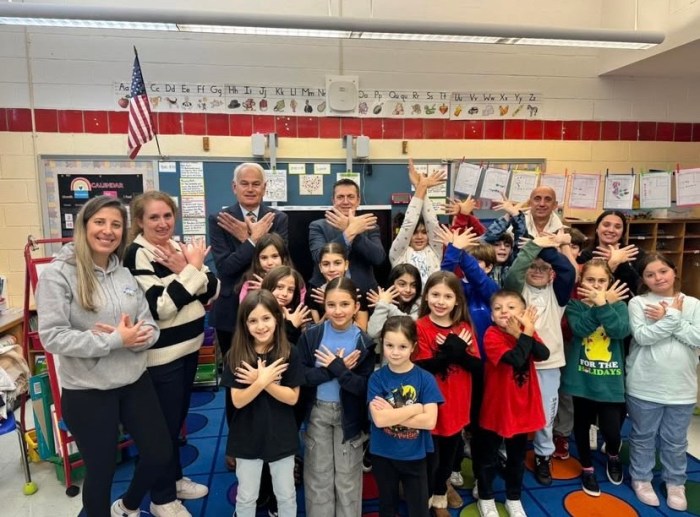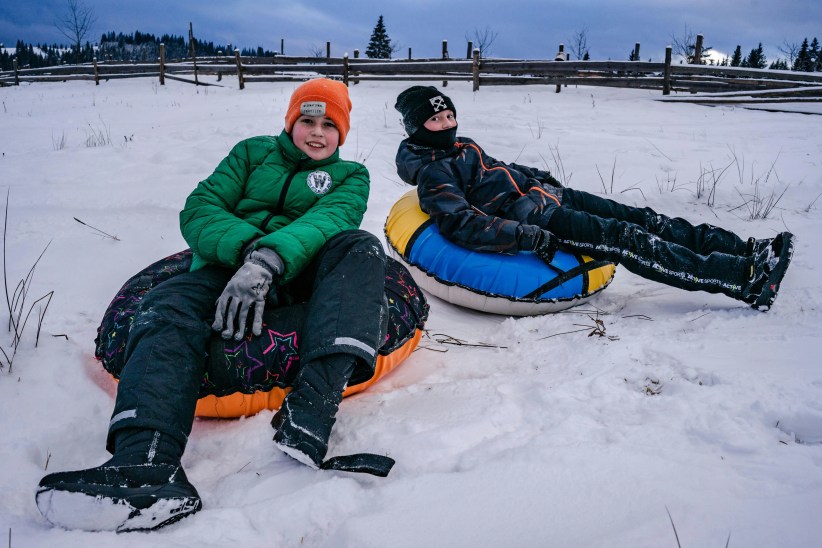By Alex Ginsberg
The gymnasium at the Lifeline Center for Child Development in Queens Village was crammed with plants, papier-mache snakes, recreated Indian villages and other student science projects celebrating the rain forest ecosystem Friday as PS 23's three-day science fair came to a close.
“We learned about how to preserve the rain forest, and why it is important to save it,” said one 14-year-old student, Christian, who helped draw a large jaguar, part of a mural that covered the hallway leading to the gym.
PS 23 is a multi-site school serving students from all five boroughs with special emotional and educational needs. Each year roughly 400 students collaborate to put together science projects focused on a particular theme. Classe size is limited to only 10 students.
Each year the school holds a literacy fair and a science fair in which student work centered around a particular theme is showcased, said PS 23's principal, Phyllis Weinfeld.
Greg, 13, proudly showed off a list of rain forest products he had assembled as part of his project. The list included chocolate, tires, oil, and chewing gum.
“It's what we eat today and what we use today,” he said.
Models of capybaras (wild pigs of the rain forest) abounded, including one outside the entrance to the gym that functioned as a piggy bank. Visitors could spin a giant “Wheel of Fortune” to play a trivia game which tested knowledge of ecological concepts. A miniature “rain forest cafe” featured a CD player with Brazilian samba music and a large tri-fold display entitled “Our precious wasp” offered on exhaustive lesson on the fearsome insects.
In the center of the gym was a large collection of plants, birds and a giant fake boa constrictor.
“A lot of it is experiential,” said Mariana Frazer, a science teacher at the school. “They learn the facts, do the reading, then take their knowledge and put it together, hands on. Every curriculum area is represented.”
One ambitious science project attempted to show that spider plants grew bigger in compost than in standard soil. A small sign next to the six sample plants read, “Which plants grew bigger?”
A computer slide presentation showed pictures of panthers, cheetahs and other types of wild cats and ended with a quiz. One group had knitted a large canvas quilt with depictions of animals sewed on. And what science fair would be complete without the model volcano, complete with exploding crater?
Patty, 14, explained and diagrammed the different food chains that make the rain forest ecosystem function in her project.
“At the top is an animal that can't be eaten by another animal,” she said.
Most of the students had been working since early April to produce their projects. Patty, for one, was glad to be finished.
“It was kind of hectic,” she said, “but yeah, I had fun.”
Reach reporter Alex Ginsberg by e-mail at Timesledger@aol.com or call 718-229-0300, Ext. 157.

































